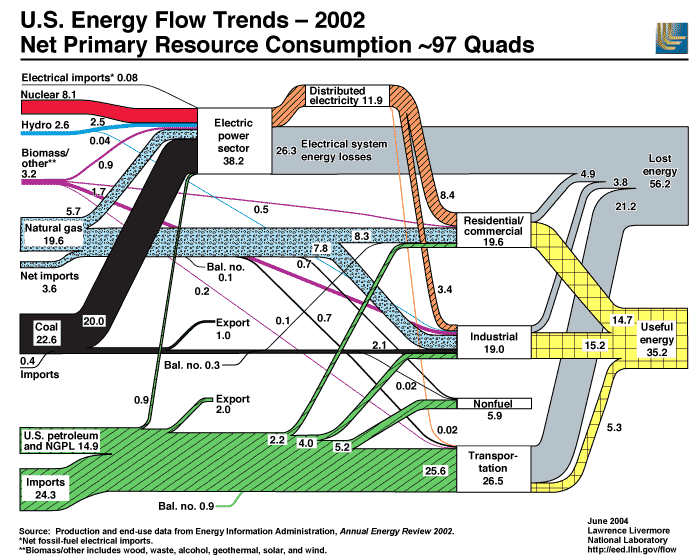Thanks Gary and evnow for the fact check on WalMart. I apparently either misremembered what was supposed to be a more limited power input or...something. I haven't yet found the doc I thought I remembered.
evnow - I 'get' that you're looking at a completely sustainable balanced end result - and that's my view of the goal as well. But as you beautifully pointed out - this Titanic has an oil noose around it's funnels and it'll take a lot to overcome the momentum and turn the ship while also chipping away at the ropes. I guess the old saying about having it fast, cheap, or good - chose any two - applies. But at some point, someone has to decide to turn hard to port and send someone out with a machete or two.
From what I know about the Vote Vets view - their energy goal is to stop buying oil from folks that are shooting at us. It's not about cutting imports from Canada and is certainly not about stopping Bananas Japanese car imports.
You might enjoy Robert Baer's book "Sleeping with the Devil - How Washington Sold our Soul for Saudi Crude". Mr. Baer is a retired CIA analyst that spent most of his career in the Middle East. His view of the world isn't commonly seen in the press or in political speeches.
I suspect you're right when you say that most folks don't know that nearly everything in their house or life is either made of oil or got there with oil - including the majority of our food. I also suspect they don't realize that the Saudi oil exporting infrastructure can be severely impaired for 1-2 years with nothing more than a couple of the inflatable boats and plastic explosives used to put a hole in the side of the USS Cole.
Baer's 'Devil' was published in 2003. Here's a quote from the prologue:
"So what exactly would happen to the price of oil [after an attack on the Saudi pipeline or oil processing system]?I've surveyed contact in the oil industry, but no one could come up with even an approximate figure. Apparently, good econometric forecasts on this kind of scenario don't exist. They tell me, thought, that initially we could count on seeing oil hit $80 or $90 a barrel, based on supply and demand. But this does not factor in the panic that would ensue - wild speculative buying. And then there is the wild card of run-of-the-mill disruptions ocurring at the same time, like in Nigeria or Venezuela. Now we have oil selling at way over $100 a barrel. But what if chaos in Saudi Arabia slopped over th e border into the other Arab sheikhdoms that collectively own 60 percent of the world's oil reserves? My contacts wouldn't even touch that one, but my guess is that we'd see oil at $150 a barrel or a lot higher. It wouldn't take long for everything to follow suit: economic collapse, world political instability, and a level of personal despair not seen since the Great Depression."
Sound familiar?
The DOE says we can supply
20% of our energy needs with wind by 2030. Pickens has proven we can do it faster.
MacKay shows that we can supply the population of the US with their average 250kWh/day with concentrating solar in a 375x375mile square. MacKay also points out that the typical energy use in Europe is 80kWh/day. I can confirm, having lived in England and Germany for a total of seven years, that quality of life isn't compromised at 80kWh per day.
I know that individuals around the world are already self sufficient. I know also that there are 'intentional communities' springing up all over the planet. Neither group has had to sacrifice or reduce their standard of living or give up cars or hot tubs or internet access - they report their standard of living has improved along with their health and overall sense of happiness.
Andy


